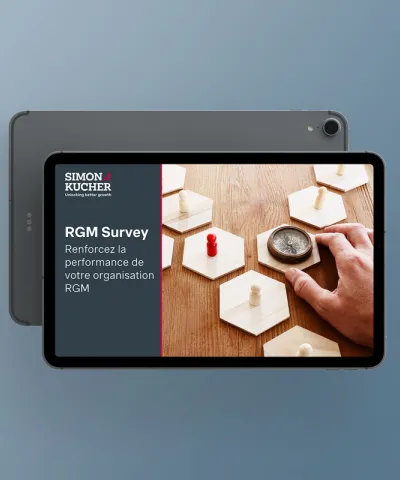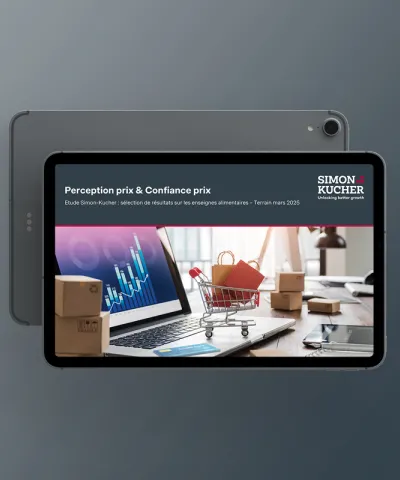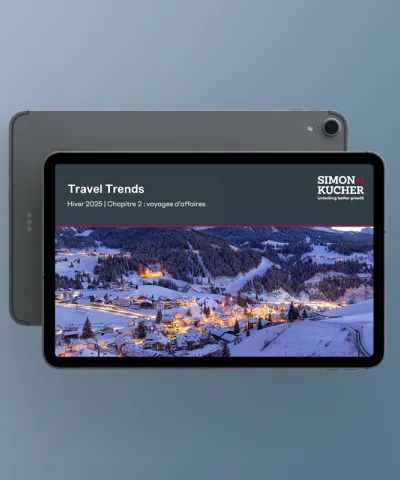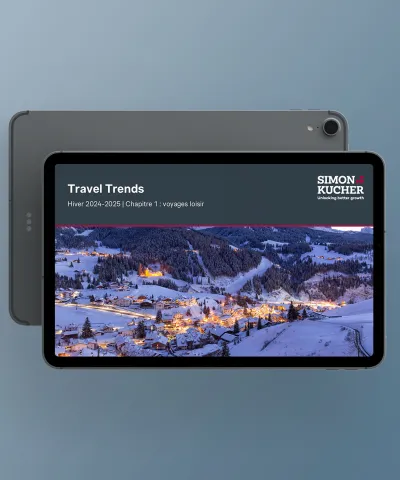In recent years, sustainability has firmly established itself as a top priority in boardrooms worldwide. No longer just a buzzword, it has become a critical issue that no CEO can afford to ignore. However, while the need for sustainable practices is evident, many companies struggle to transition from traditional to more eco-friendly products. They often face the dilemma of either charging a premium or compromising on quality, and in both scenarios, they struggle to attract consumer interest or willingness to pay. As a result, their sustainable innovations often fail to gain traction.
This challenge is often explained by the Green Mirage Effect. Consumers express strong support for sustainability and claim they are willing to pay a premium for environmentally friendly products, but their actual purchasing behavior doesn’t always align with these claims. This discrepancy divides consumers into two camps: a small group willing to pay more for sustainable options and a much larger group that either cannot or will not. For companies, this creates a significant hurdle, making it difficult to profit from sustainable offerings as they are unable to convince the majority of consumers to pay higher prices and prefer to sacrifice on quality rather than accept lower margins, leaving the consumers unhappy.
Like all success stories, a company thrives when it has a robust, well-defined strategy. But how do you do that? Read further to unlock essential insights into consumer archetypes across the sustainability landscape. Discover how to craft a winning strategy that propels your company toward green growth and long-term profitability. Besides, we recommend joining our exclusive breakfast roundtable with Nicolai Broby Eckert, Partner and author of The Demand Revolution, who will share strategies for balancing profitability with sustainability in this paradigm shift.
Demand revolution
At first glance, it appears that consumers only say sustainability matters to them, while their purchasing choices suggest otherwise. In reality, the story is more complex. Our research shows that consumer preferences are shifting, with sustainability rapidly becoming a baseline expectation. Today, 78% of consumers consider sustainability one of their top five purchasing criteria, and 32% rate it as the most important factor. Furthermore, 56% of consumers show greater loyalty to brands with strong environmental credentials.
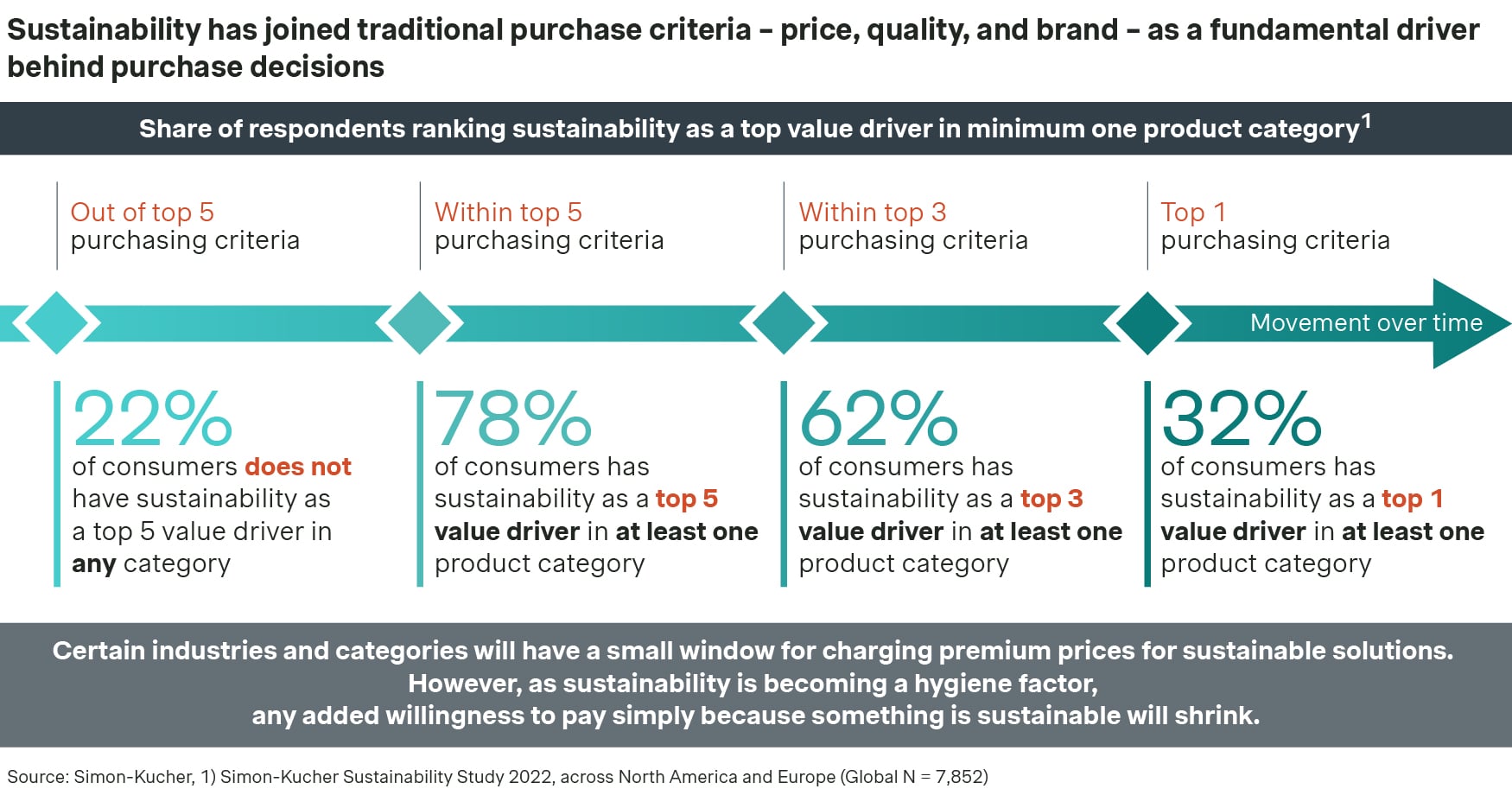
This shift in demand is so significant that we are witnessing a demand revolution, where growing consumer interest is driving the creation of new markets and products. Companies that can align their strategies with this evolving landscape will be best positioned for success, as sustainability becomes not just a challenge but an opportunity for exponential growth.
A closer look at today’s consumer reveals that their behavior isn’t as binary as the Green Mirage Effect might suggest. It’s not just a case of "willing to pay a premium for sustainability" versus "not willing to pay". Consumers are much more complex. Our research has identified eight distinct consumer types, each varying in their commitment to sustainability and their willingness to pay more for it. This means that instead of a simple yes-or-no approach, consumers fall along a spectrum.
This insight is good news for businesses. It means that there is more flexibility to experiment with different strategies. By recognizing the diversity of consumer attitudes towards sustainability, companies can tailor their offerings and pricing models to meet a wider range of preferences, ultimately making it easier to succeed in this shifting landscape.
The sustainable consumer archetypes
The figure below illustrates the eight consumer types and, in percentages, their prevalence in society. This article will only provide a brief overview of each type without delving too deeply into their characteristics; a more in-depth analysis will be given in another, still to be published, article on the demand revolution. These archetypes were developed based on purchase criteria, willingness to pay for sustainable products/services, changes in buying behavior over the past five years, motivations toward sustainability, the obstacles faced in adopting sustainable choices, and the extent of research conducted prior to purchase.
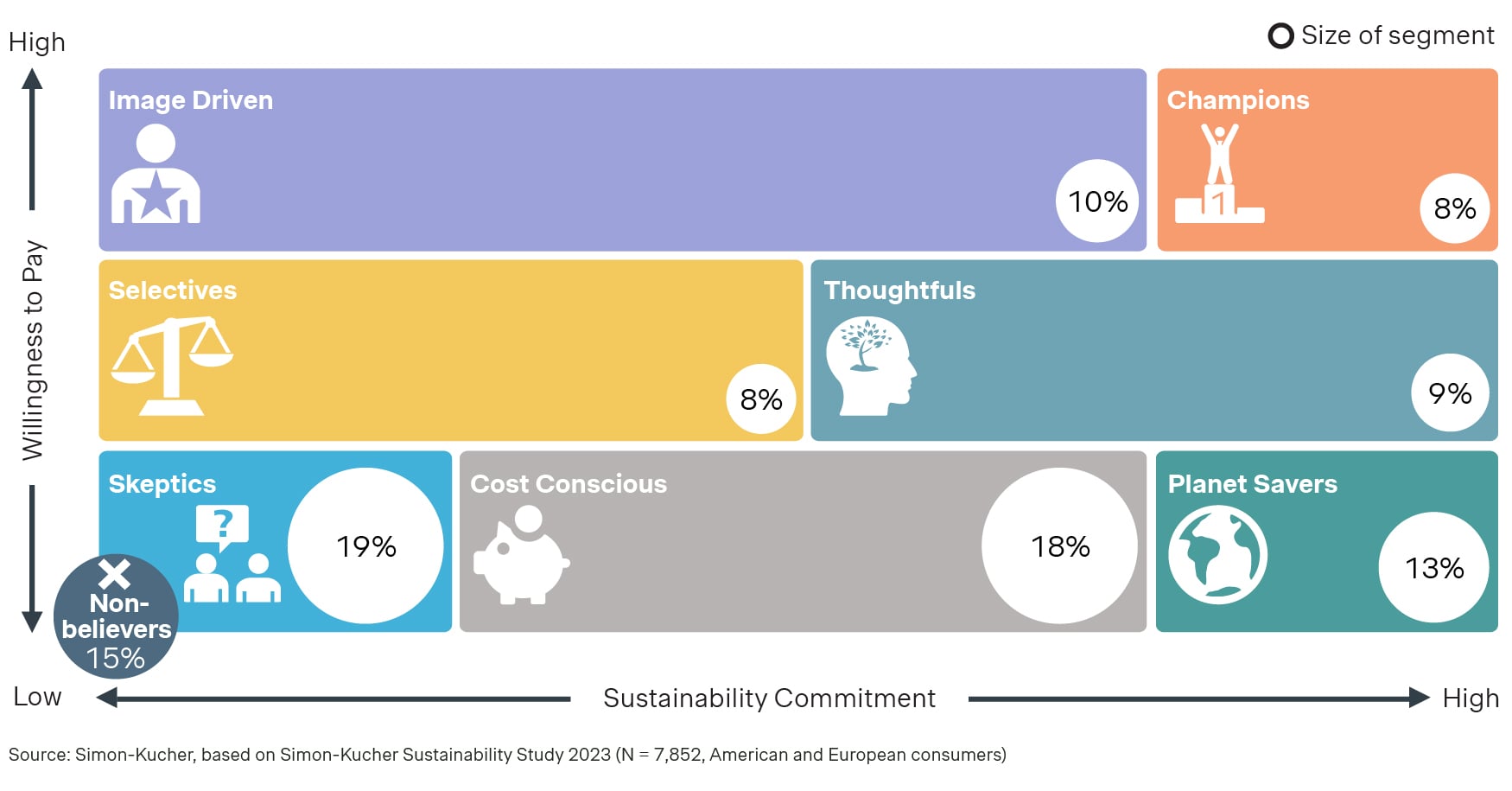
Below you find a summary of each consumer archetype:
Champions
Champions place sustainability as their top priority in purchasing decisions and are ready to pay a premium when necessary. Over the past five years, they’ve made substantial shifts in their buying behavior to prioritize eco-friendly products. Champions prioritize sustainability over brand loyalty, diligently research each purchase, and hold companies accountable for any misleading claims. To appeal to this group, brands must offer the most sustainable products within their categories, as Champions are willing to pay for it.
Thoughtfuls
Thoughtfuls share a commitment to sustainable products and are open to paying a premium, albeit with some reservations. They conduct thorough research but may lack the information to make definitive sustainability decisions, often needing detailed product descriptions to feel assured. Thoughtfuls weigh products' value against their price and are unlikely to be swayed by vague claims like “eco-friendly” without any other context. Companies can appeal to this group by providing transparent, data-driven explanations of a product’s sustainability.
Planet Savers
Planet Savers are highly engaged in sustainable lifestyles, consistently researching products and making eco-conscious choices. However, financial limitations lower their willingness to pay for premium sustainable products. This group seeks ways to reduce their footprint creatively by choosing long-lasting items, reducing consumption, and opting for secondhand options when feasible. Companies can win over Planet Savers by focusing on durability and affordability.
Cost-Conscious
As one of the largest groups, the Cost-Conscious prioritize sustainability in specific categories but are generally reluctant to pay a premium. Quality takes precedence over sustainability for them. Companies can use behavioral economic principles to nudge this group toward sustainable choices, using techniques like “decoy options” or making use of “tending to the middle” to steer preferences subtly.
Image-Driven
Image-Driven consumers value sustainability for products that impact their self-image, such as beauty and personal care, and are open to paying a premium in these categories. However, they deprioritize sustainability for less visible purchases and are skeptical of green claims. Brands can appeal to this group by positioning products as aligned with a sustainable lifestyle, ensuring these offerings are seen as trend-relevant.
Selectives
Like the Cost-Conscious, Selectives are climate-aware but show limited commitment to sustainability, especially if it requires considerable sacrifice. They are willing to pay slightly more for sustainable products, but quality and brand reputation remain primary drivers. Brands can attract Selectives by offering products that excel in quality and brand recognition, with sustainability as an added value.
Skeptics
The Skeptics, the largest consumer segment, are not dismissive of climate change but doubt their individual impact and are skeptical of companies’ sustainability claims. Price and quality are more influential than sustainability for this group. To appeal to Skeptics, brands should offer high-quality products with competitive pricing and emphasize sustainable features as a secondary benefit.
Nonbelievers
Nonbelievers show the least interest in sustainability, neither viewing it as a priority nor being willing to pay a premium for it. Price is their primary consideration. Brands looking to reach Nonbelievers should focus on affordability and highlight any additional value the product provides without emphasizing sustainability, as this group is not influenced by eco-friendly claims.
Consumers fall on a spectrum of archetypes important for differentiation in the sustainable profit game. Each archetype needs a different strategy to win them over. But how can you build one? Which strategies can companies leverage in their way to green growth? And where should you start?
How to launch your green products
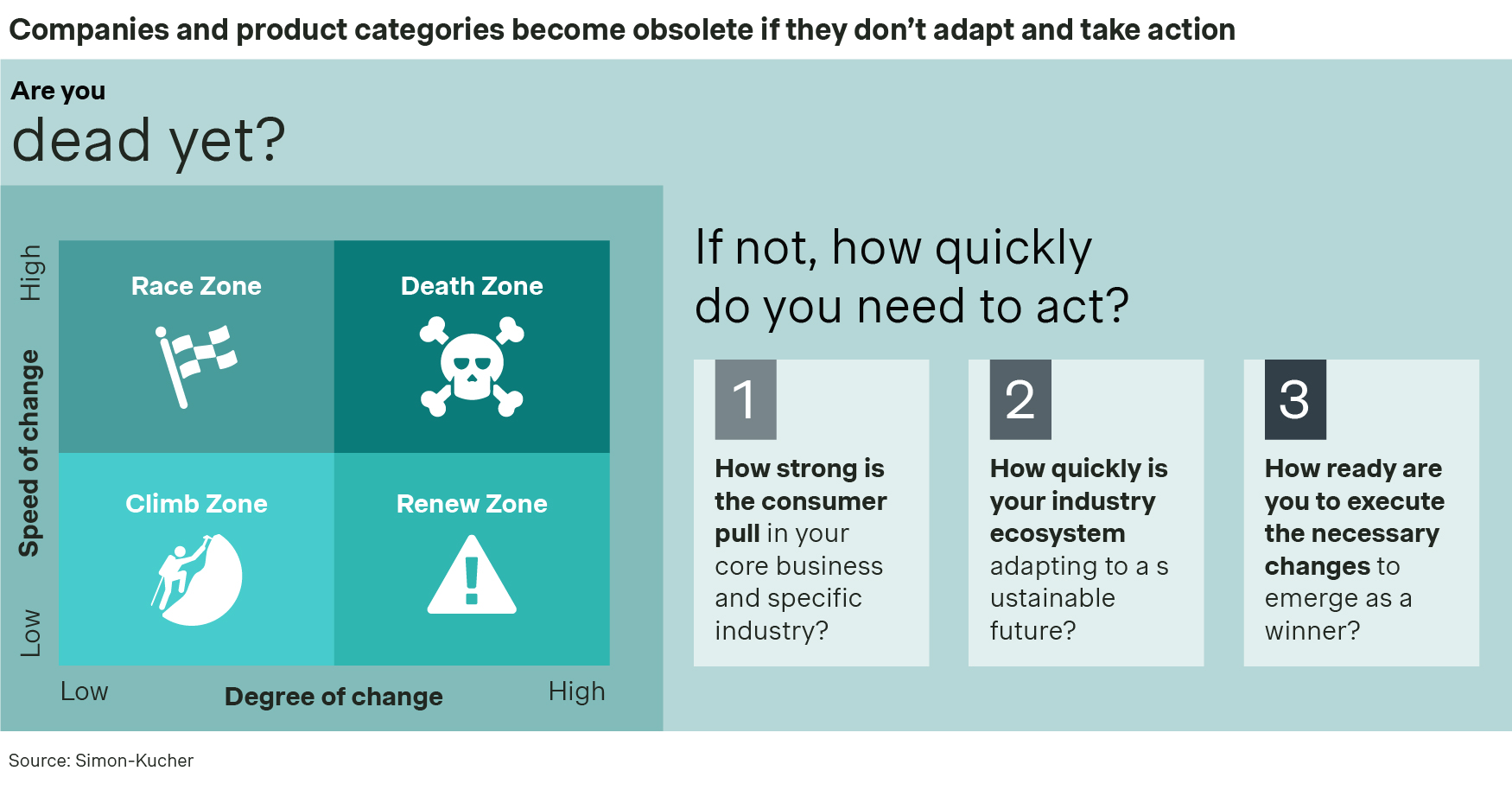
Before developing a sustainability strategy, it’s essential to evaluate your company's current position in the landscape. This can be achieved by addressing three foundational questions:
1. How advanced are your consumers?
Consumer demand for sustainability varies widely across markets, influenced by factors such as the mix of consumer archetypes, their willingness to pay, and purchasing frequency when the right solution is available. By understanding this demand, you can gain insights into both the qualitative and quantitative aspects of pent-up demand within your specific industry or category.
2. How advanced are our competitors?
Analyzing the competitive landscape helps gauge the pace of sustainability transformation in their industry. Some sectors have embraced sustainability rapidly, while others lag. Assessing competitor positioning within the demand revolution enables you to identify competitive urgency and potential opportunities for proactive, strategic moves.
3. How ready are we?
This final question addresses your company's internal readiness to act on sustainability. It involves identifying which aspects of the current business model can adapt, the impact on go-to-market strategies, and the scalability of potential solutions. This assessment will help define the ecosystem in which your company can successfully innovate and operate.
Once you have established your position within the sustainability landscape, you can begin to define the strategy you will pursue.
Potential strategies to pursue
Every market consists of a unique blend of consumer archetypes, enabling tailored strategies to position your company in the sustainability game. For instance, Patagonia has successfully associated its brand name with sustainability, allowing it to command a premium by targeting the right consumers with the right strategy. But what if such a premium-focused approach isn’t viable in your market? There are several strategic plays that can support your path to green growth:
Brand Play
This approach centers on creating a brand that consumers immediately associate with sustainability. Brand leaders like Patagonia have cultivated an identity where sustainability is at the core of their existence, earning high loyalty and advocacy from eco-conscious consumers. This play is especially suited for markets with a sizable base of consumers highly committed to sustainability and willing to pay a premium for it.
Mass Affordability Play
In this strategy, companies prioritize cost efficiency and scale, ensuring sustainable products remain accessible without compromising quality. This approach appeals to consumers committed to sustainability but unwilling to pay a premium, making affordability the key factor. Tesla exemplifies this with its push to bring affordable electric cars to the public through continuous cost-cutting and value-chain optimization, opening up sustainable options to a broader audience.
Ease of Choice Play or Engagement Play
Despite slight differences, both plays aim to make sustainable choices easier and more attractive for consumers. The Ease of Choice play relies on accessibility, positioning sustainable products alongside traditional options to make the sustainable choice effortless. Rügenwalder Mühle, market leader and a highly acknowledged sausage maker in Germany leveraged this play. They introduced vegetarian and vegan alternatives next to their traditional products, now driving the larger portion of their revenue. In contrast, the Engagement play enhances consumer involvement, as LEGO has done by creating a community for consumers to exchange ideas and trade bricks, deepening their brand connection and commitment to sustainable practices by trading secondhand LEGO products.
Longevity Play or AntiWaste Play
Focusing on the shift from “volume to value,” these plays cater to consumers conscious of their environmental footprint. The Longevity play promotes products designed for extended use and easy repair, as exemplified by multinational retailer Fnac Darty’s subscription service, offering free repairs, delivery, installation, and returns to encourage long-term product use. While the Antiwaste play targets waste reduction, as seen with SodaStream’s devices that allow consumers to make sparkling beverages at home, reducing the need for millions of plastic bottles each year.
The strategies outlined above and shown in the figure below, highlight diverse approaches to winning the sustainability game, each catering to specific consumer archetypes. The right play, aligned with your target consumer’ preferences, can be instrumental in shaping a successful green growth strategy.
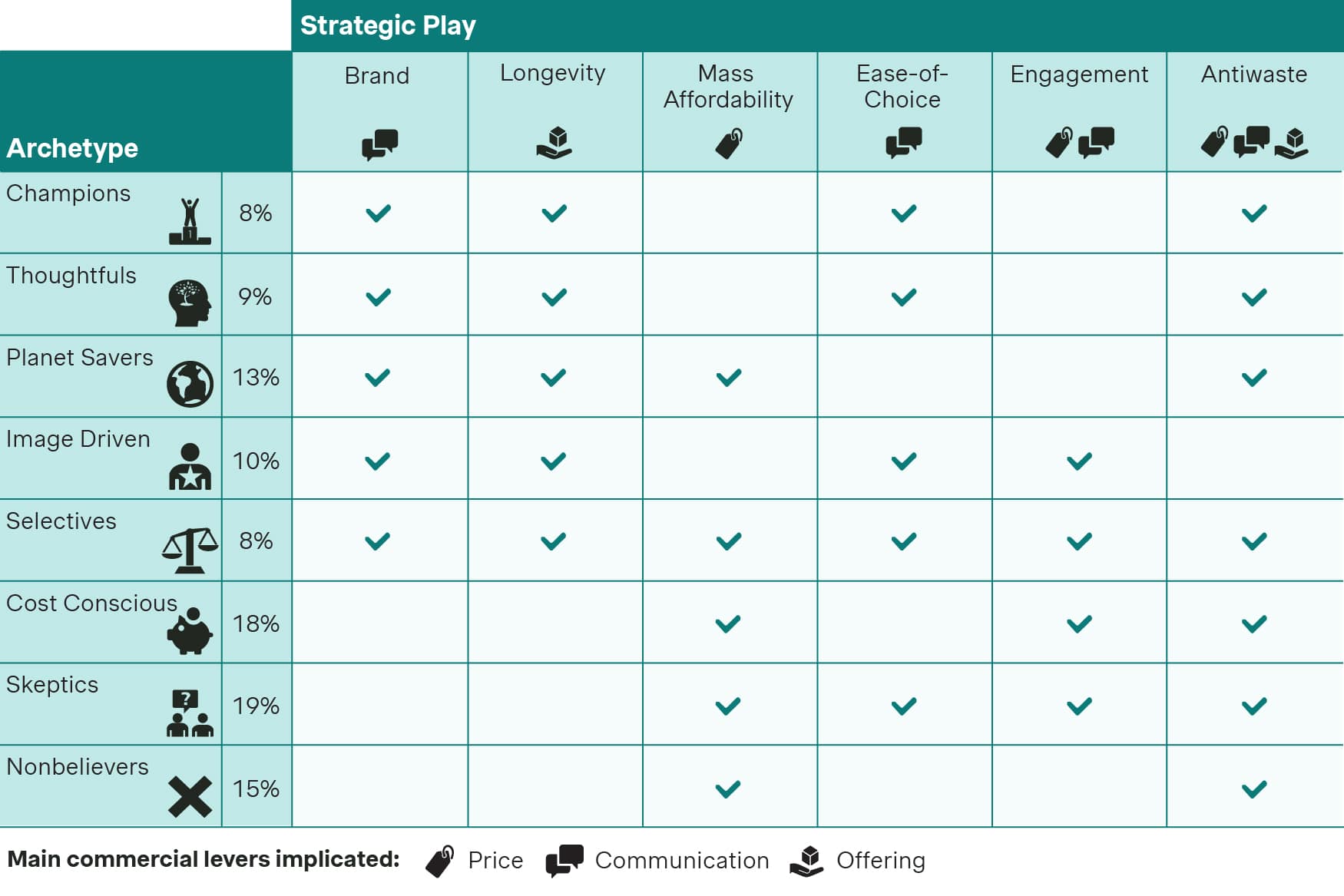
Your path to green growth
In summary, the consumer landscape is far more nuanced than it may initially appear, offering ample opportunities to tailor strategies within each industry, market, and category to suit the unique mix of consumers in that area. By prioritizing thorough market research and developing a well-defined strategy, companies can unlock sustainable market expansion and achieve efficient green growth.
Breakfast Roundtable on Balancing Profit & Sustainability
This article, inspired by the newly published book The Demand Revolution, is the first in a three-part series exploring the sustainability landscape, the diverse consumer archetypes within it, and the strategic approaches businesses can adopt. For deeper insights, we recommend exploring the book itself and attend our upcoming Breakfast Roundtable on balancing profit and sustainability. Stay tuned for more in the upcoming articles.


